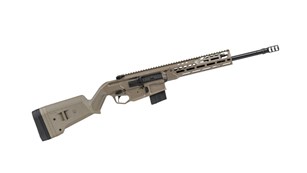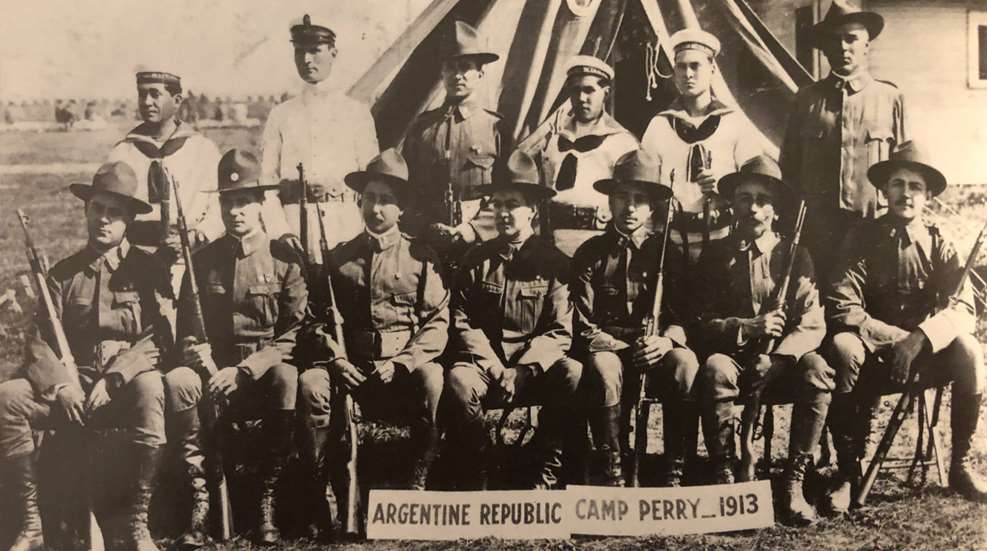
"The year 1913 will stand for many years as the banner year in the rifle shooting annals of this country."
—Report of Rifle Shooting in the U.S., 1913
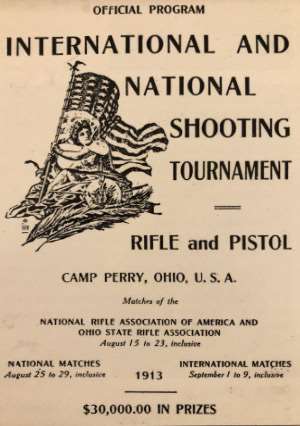
Camp Perry was the place to be for shooter in the summer of 1913. The month of September, especially, was significant in that it marked the 100th anniversary of Commodore Perry's victory at the Battle of Lake Erie. The National Matches were engulfed in fanfare as the United States hosted teams from South America and Europe in the international portion of the tournament, which included Palma competition and followed the firing of the NRA and Board events. Organizational efforts to commemorate the Perry anniversary in a "shooting tournament of extra interest and importance" had begun two years prior, while trips abroad by U.S. shooters in 1912 helped secure reciprocation visits by foreign teams to Camp Perry. This set the stage for "the largest shooting tournament which this country has ever witnessed."
The cover of the match program this year read "International and National Shooting Tournament" and among the general information contained therein was the following:
"The shooting grounds contain 400 acres and it is the largest shooting ground in the United States. There are 210 rifle targets and 20 revolver targets, to which will be added a new range containing about 50 targets for the international matches where the shooting will be held at 300 meters. Additional revolver targets will be installed as well as a running deer target and targets sufficient to accommodate the Miniature Match."
The international program included a re-entry Miniature Match, significant in that it represents the first time a smallbore competition appeared in conjunction with a National Match. (Smallbore shooting joined the National Match schedule in 1919.) Match conditions this year allowed shooters to compete over a nine-day stretch at a distance of 25 yards. Five shots per target were fired from either standing or prone and a gold medal, emblematic of the world championship, plus $100 in gold was awarded the shooter with the best 10 targets in both positions. The best 10 targets in standing and the best 10 targets in prone each earned the high scoring competitors $25 gold. There were no trigger pull limitations for the firearms, which were defined as "any breech loading rifle with a caliber not to exceed 6 mm (about .236 inch). Any sights not containing glass were allowed, as were slings that could be used in connection with one or both arms.
Under the guidance of Executive Officer Gen. Robert K. Evans, who competed his longstanding stint this year as the only Executive Officer since the inception of Camp Perry as site of the National Matches, Army and Marine forces conducted the pit and scoring duties, respectively. The NRA portion of the tournament opened the festivities in record fashion as 532 competed in the historic Wimbledon Cup Match.
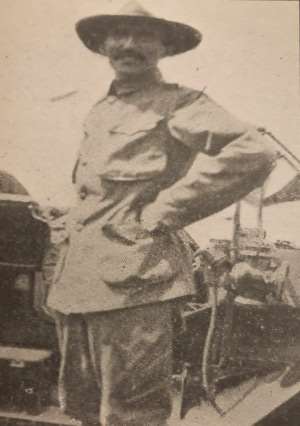
Infantry Corp. Thomas Vereer earned the victory with his issue Springfield in a tie-break with Col. C.B. Winder, whose Springfield was topped with a telescopic sight. "It is a remarkable fact," reported Arms and the Man, "that Colonel Winder has three times tied and been outranked for the Wimbledon."
The Leech Cup field featured 517 entries, up almost 300 from 1911, and was won by G.W. Chesley of New Haven, Conn., while 589 took to the line for the President's Match, which this year featured 15 shots (up from 10) at 1,000 yards. Cavalry Capt. W.H. Clopton Jr. was high scorer overall and also earned the customary letter from the President of the United States (Wilson) to the individual Military Champion, as this match alone now determined the title.
The National Individual Match kicked off the government contests and featured 790 entries and a change in the course of firing. To accommodate the international matches, the 200-yard range was revamped to conduct 300-meter firing, so special War Department authority was granted to fire the National Individual Match in the following order: skirmish, 600-yard, 1,000-yard and surprise fire. Pennsylvania's Edward Sweeting won the match under conditions described as difficult owing to over-doping. An Ordnance Department theory for the lower scores was reported in Arms and the Man and offered an interesting, if neophyte, comment on the effects of mirage: "The warm ground and cool air conspired to bend the light rays and thus give a false altitude to the targets. This subject is one which has never been fully investigated. It is to be hoped that some day it may be deeply gone into."
In the National Team Match, the 200-yard slow fire and rapid fire stages were replaced with a "surprise fire" stage at 200 yards. It was quickly realized, however, that the rule that called for shooters to drop to the ground during surprise fire induced more injury than interest. "As it is shot," reported Arms and the Man, "from the prone position in almost every case, it is a man-killer. How many men have been disabled in preliminary practice is not known, but in spite of pads several men went to the hospital during Perry with bruised knees and elbows and more than one pus case resulted. Moreover, there is a general disposition to confine National Match firing to classes of fire found in the firing regulations."
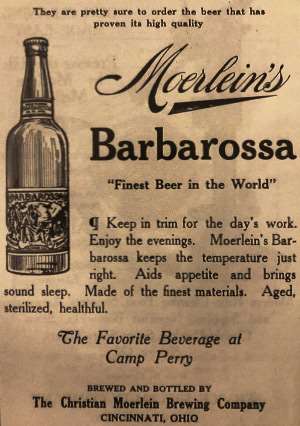
The Cavalry team, captained by President's Match winner Clopton, fired a strong final stage skirmish run and earned its first National Team Trophy while Alabama and Utah took the Class B and C titles, respectively. A strong skirmish performance was also responsible for the Oregon team's surge from 15th place to third overall, finishing ahead of two service teams, the Infantry and the Marines. In the National Revolver Match, first and second place went to civilians firing the military issue arm as Dr. J.H. Snook of the Columbus (Ohio) Revolver Club finished three points ahead of former Ohio National Guardsman and President's Match winner C.E. Orr, who this year represented the Alton Rifle Club from Illinois.
The excitement surrounding the program at Camp Perry this year was marred, however, by the death of three competitors—marking the first time anyone had died at the site of a National Match while the event was being fired. The first fatality was due to illness, the other two by accidental gunfire. On the evening of August 20, Lt. John Herd of Kentucky succumbed to a case of typhoid that he had contracted before entering camp. Eight days later, Francisco Ballon of the Peruvian team, while lying in his tent, was killed from a bullet fired by a teammate who was practicing with what he thought was an unloaded gun. The second shooting death occurred on September 1 when a scorer, Infantry Corp. Mike Fennesy, was struck by a .22-caliber bullet under bizarre circumstances. The report in Arms and the Man offered the following account:
"One of the French pistol competitors, firing on his target, had just made an exceptionally fine score and Corporal Fennesy was telling another scorer about it, when, suddenly, he put his hand to his side and said: 'I'm shot'... The shooting took place in the shooting shed at the 50-meter firing point. As soon as Fennesy was carried from the shed an investigation was begun and everyone who had been part of the shed was questioned. No one could be found who saw or heard the shot fired, and where it came from is still a mystery. The affair was also thoroughly investigated by a board of officers with nothing further developing... An impressive military funeral was held... in which all of the camp participated, from General Evans down. It was very sad, indeed."
Post-match activity by NRA officials included recommendations that encouraged construction of up-to-date smallbore ranges to satisfy increased interest and target changes that incorporated inner rings to better challenge shooters. The most significant proposal on the NBPRP's side included the recommendation to conduct divisional matches in 1914 in order to avoid conflict with the even-years Army maneuvers schedule.
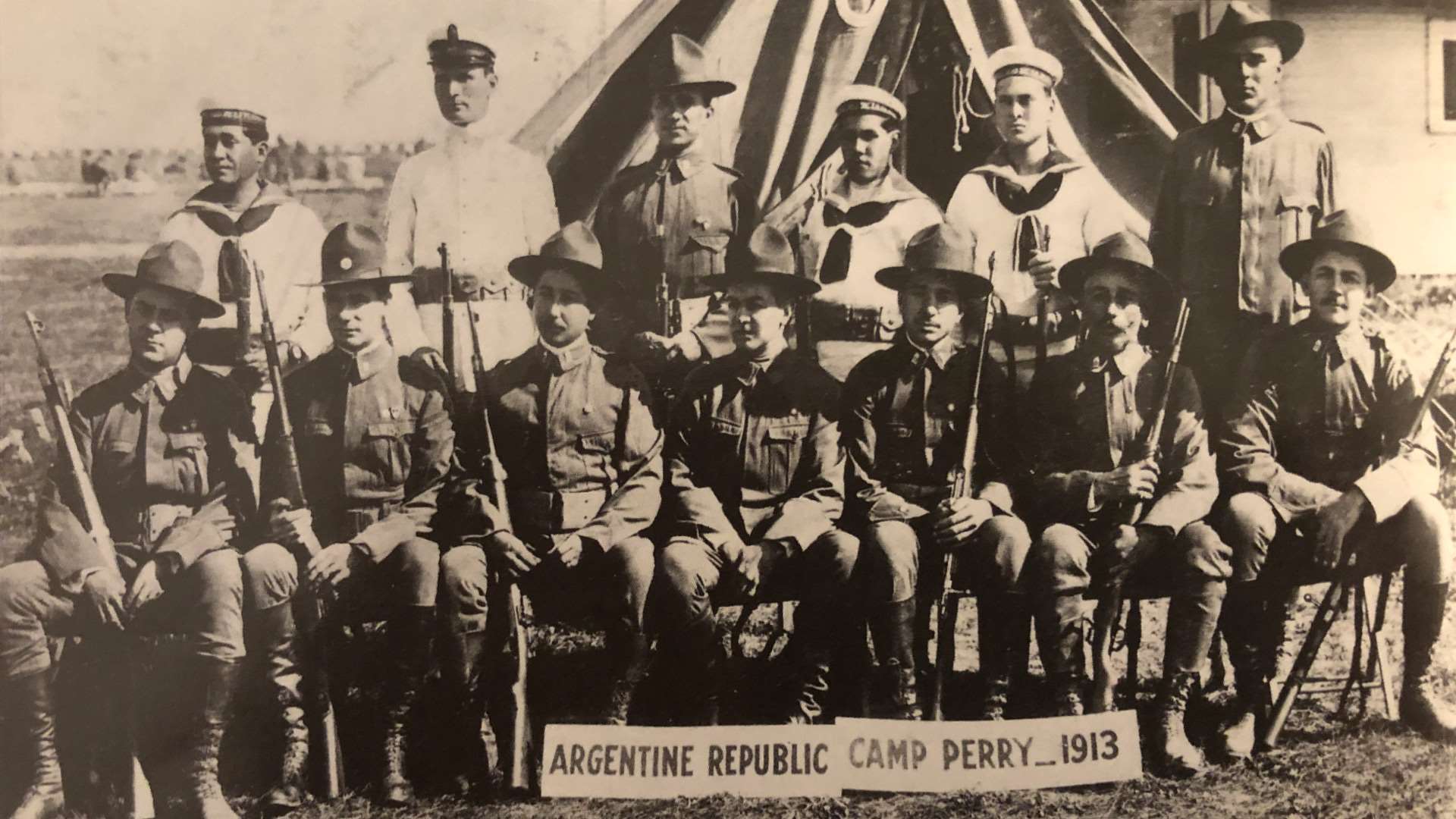
Photo: In 1913, the Argentine Rifle Squad was one of a number of foreign contingents who competed at Camp Perry.
Read more: History Lesson: National Matches on Film





